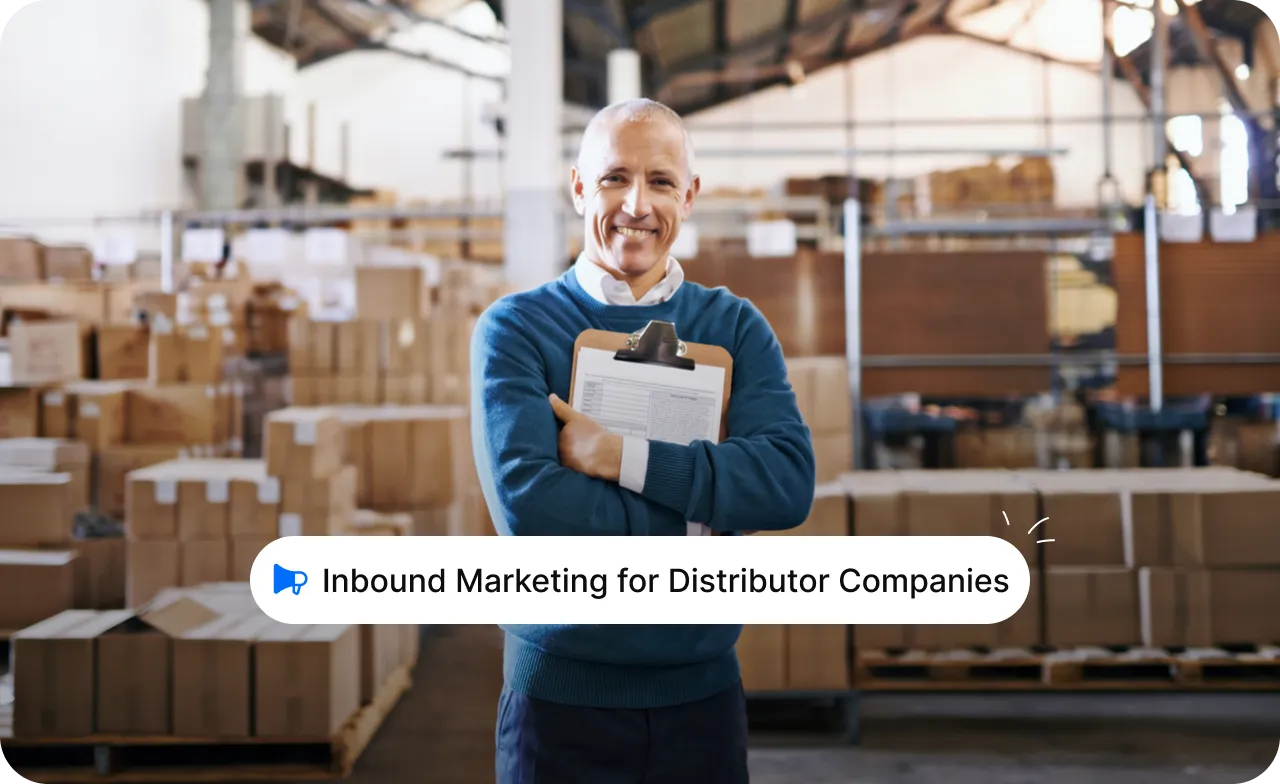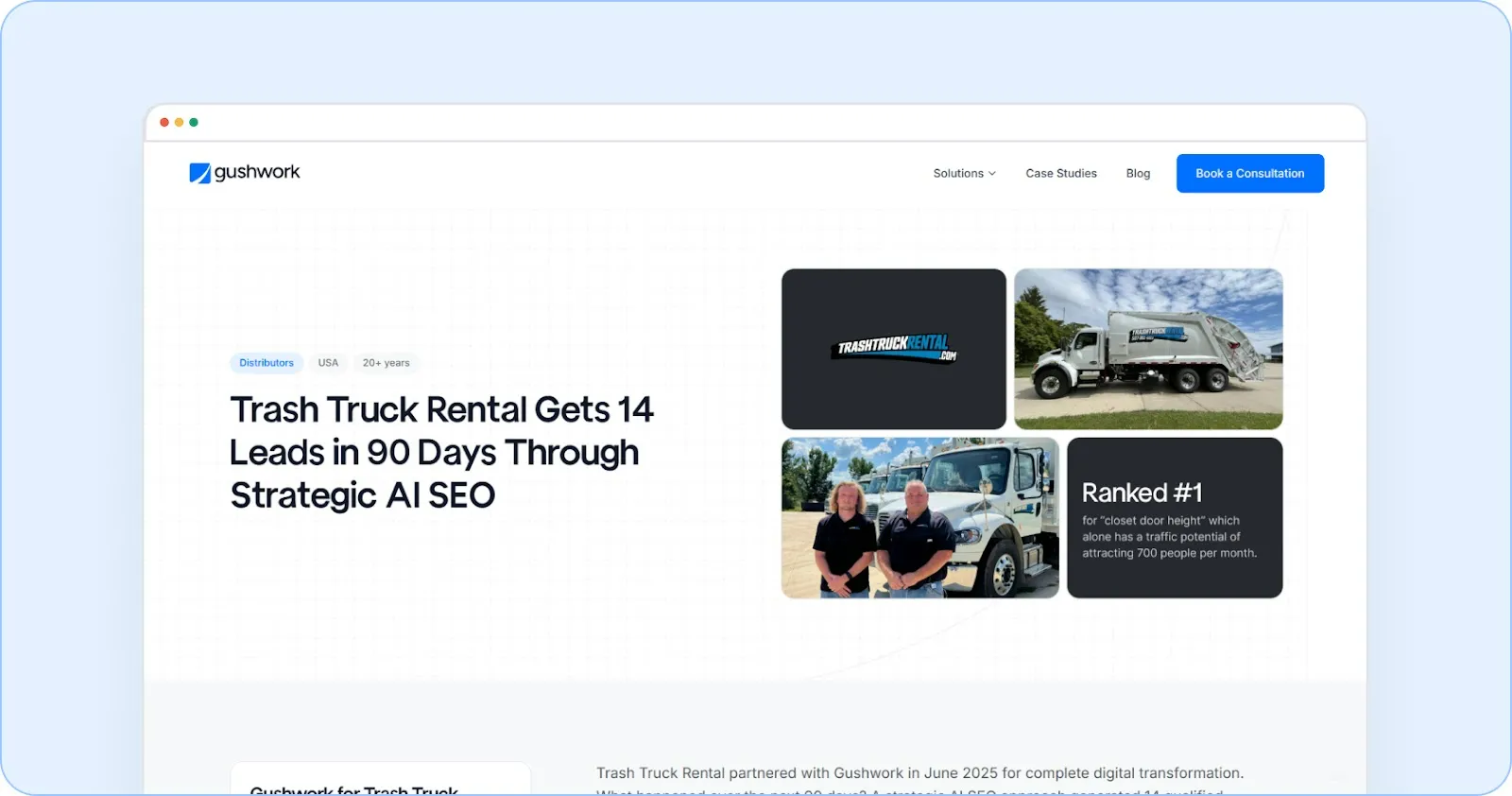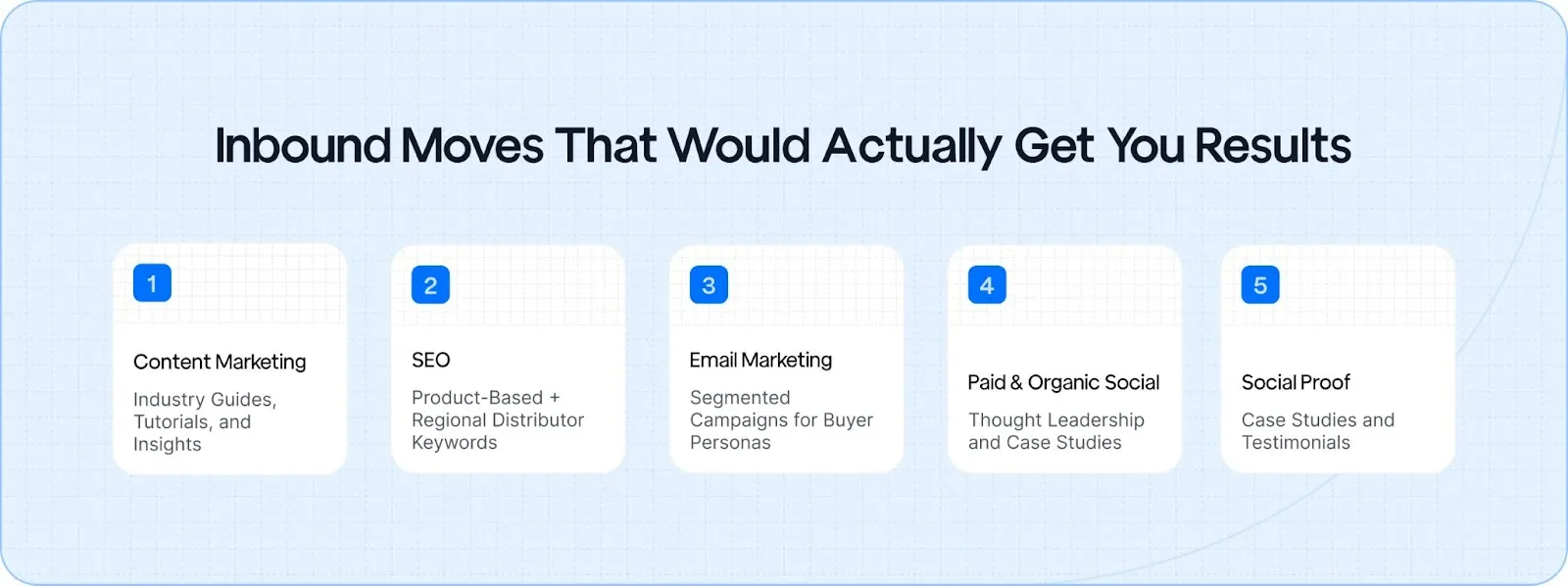To grow your painting business, being visible online is key. SEO (Search Engine Optimization) for painters ensures your business shows up when potential customers search for services in your area.
By optimizing your website, you make it easier for people to find you at the moment they need a painter.
Let’s explore how Painter SEO can help you attract more customers and expand your business.
TL;DR
SEO for painters is a game-changer and helps you get found by the right people at the right time.
- Content is king with helpful blogs and visuals that attract leads and improve rankings.
- Local authority matters by optimizing your Google Business Profile and building a strong review presence.
- Technical SEO is a must with fast, mobile-friendly websites and clean, organized code.
- Link-building boosts your SEO by securing valuable backlinks from local sources and industry partners.
What is SEO for Painters and How Does It Work?
You have your painting business running, but if potential customers can't find you online, all that hard work can go unnoticed. SEO for painters is the solution to this problem.
It’s a set of strategies designed to get your painting business to show up at the top of search results on Google, making sure that when someone looks for a painter, they find you first.
Four main components of Painter SEO work together to increase your visibility:
- On-Page SEO: This is everything on your website, like the text and images. It’s about ensuring your content is clear and includes the right keywords. This helps Google understand what your business offers.
- Local SEO: This focuses on helping your business show up in searches like “painters near me.” By targeting local keywords and optimizing your online presence for your specific area, you’ll appear when people in your city or neighborhood are looking for painting services.
- Off-Page SEO: This is about building your reputation online. When other trusted websites link to your site, it signals to Google that your business is reliable. It’s similar to word-of-mouth referrals, but online, getting linked by local blogs, business directories, or industry sites can improve your SEO.
- Technical SEO: This is the behind-the-scenes work that makes sure your website is fast, mobile-friendly, and easy for Google to read. If your website is slow or hard to navigate, people may leave before they even see your services.
Create Your SEO Strategy: The Essentials
Building a solid SEO strategy is the foundation of long-term online success. By focusing on the right tactics, from keyword research to content creation and technical optimization, you can ensure your website ranks higher and attracts the right customers.
Let’s explore the key steps to craft a focused SEO strategy that drives results.
Identifying Your Ideal Customer and Service Areas
The first step to building a successful SEO strategy is understanding your customers and where they’re located. Without clearly defining your target audience and service areas, you risk wasting time and resources on searches that don’t lead to new business.
By focusing on specific, high-conversion service areas, you ensure that your efforts are more effective. Here’s why narrowing your focus is important:
- Specializing in a few services, like interior painting or cabinet painting, attracts customers looking for exactly what you offer.
- A targeted approach ensures visitors to your website are potential customers.
Clearly defining your services and locations maximizes the impact of your SEO strategy. Many businesses miss out by trying to serve everyone; focusing on your key services, makes it easier for the right audience to find you.
Keyword Research for Painters: Finding High-Intent Terms
Once you’ve identified your ideal customers and service areas, the next step is keyword research. This ensures your website appears for the terms people are actively searching for.
Without the right keyword strategy, you might end up ranking for terms that won’t drive meaningful traffic or attract the right clients. Effective keyword research helps you target terms that match what potential customers are looking for.
Using tools like Google Keyword Planner, Ahrefs, and SEMrush can help you identify high-traffic, low-competition keywords, allowing you to rank faster and more effectively. By targeting the right terms, you ensure your business shows up when it matters most.
Examples of keyword types to consider:
| Keyword Type |
Example Keywords |
Search Volume |
Competition |
| General Terms |
"interior painting services," "house painting" |
High |
High |
| Long-Tail Keywords |
"affordable cabinet painting," "professional exterior painting" |
Medium |
Medium |
| Localized Search Terms |
"house painters near me," "painting services in my area" |
Medium |
Low |
By targeting a mix of these keywords, we can create a robust keyword list tailored for your business over the next 6 months, ensuring that each service page targets a specific term for optimal results.
Keyword research is the foundation of SEO.
Need help targeting high-conversion keywords? Let us help you identify the terms that will drive the right traffic and create a solid strategy for your business.
Optimizing Your Website for SEO
To effectively optimize your website for SEO, it’s essential to focus on more than just adding keywords. The structure, content, and local relevance of each page must work together to improve your visibility in search results.
By strategically optimizing key elements, you can ensure your website is easy to find and compelling to your target customers.
Let’s explore the key areas you need to focus on to get your website ranking higher and attracting more local business.
On-Page SEO: Structuring Your Pages for Ranking
Optimizing key elements helps both search engines and users find what they need, but it’s easy to overlook some details. That’s why understanding the key parts of your pages is essential to ranking higher.
Here’s what to focus on:
- Title tags and meta descriptions: Keep them concise, clear, and include your main keyword with local info. This helps search engines understand the purpose of your page and increases the chance of showing up in the right search results.
- Headings: Organize your content with the right structure. Use H1 for the main topic, H2 for subtopics, and ensure each heading includes relevant keywords.
- Content: Aim for 600-1,500 words, with natural keyword variations, related services, and local details. This content needs to engage readers while signaling to search engines that your page has valuable, relevant information.
Each blog on your website is a chance to improve your rankings.
Optimizing content for both search engines and visitors can make all the difference in driving more traffic.
Location-Specific Pages for Local SEO
To stand out in local searches, you need to create unique pages for each area you serve. This process ensures your business is found by customers looking specifically for painting services in their location.
Creating these pages may seem straightforward, but the key is in how you make each page relevant to that particular area. Here's a smart structure to follow:
- Service page: Highlight the specific services you provide in that location, and be sure to mention local landmarks and areas you serve.
- Local relevance: Add testimonials and other locally focused details to make each page feel personal and specific to the area.
You might need some expert insight to ensure you're making the most of your local SEO strategy.
Building Local Authority with Google Business Profile (GBP)
To build local authority and improve your visibility in local searches, optimizing your Google Business Profile (GBP) is essential. It’s about ensuring your business details stand out to potential customers.
Let’s explore the key steps to take full advantage of your GBP and maintain consistency across all online directories.
Optimize Your Google Business Profile
Your Google Business Profile (GBP) is often the first impression potential customers get of your painting business online. It’s crucial to complete your profile and to make sure it’s optimized to attract the right people and build local authority.
Key elements to optimize:
- Name, Address, Phone Number (NAP): Ensure these are accurate and consistent to improve visibility.
- Service Descriptions: Clearly describe what you offer to match search intent.
- High-Quality Images: Add photos that showcase your work and build trust.
- Frequently Asked Questions (FAQ): Answer common questions to provide value and clarity.
- Regular Updates: Keep your profile fresh and relevant by posting updates often.
- Customer Reviews: Encourage positive reviews to increase credibility and boost rankings.
Maintaining a well-optimized GBP takes time and attention, but the benefits are immense. It can help you dominate local search results and ensure customers can easily find and trust your business.
A well-optimized GBP can make all the difference.
Let’s dive into the must-have details that will help you get more visibility in local searches.
NAP Consistency and Local Citations
NAP consistency is a critical factor in your local SEO strategy. Your name, address, and phone number must be identical across all online directories and platforms like Google, Yelp, and Angi. Any discrepancies can confuse search engines and potential customers, which can harm your rankings.
Additionally, claiming your business on local directories is essential. It helps improve your credibility and boosts your presence in local search results.
This process may sound simple, but managing NAP consistency across multiple platforms requires expertise to avoid mistakes and ensure optimal results.
Link Building for Painters: Earning Authority Online
Link building is a powerful strategy for improving your website's authority and boosting your rankings.
Let’s dive into the essential steps for building effective backlinks that enhance your SEO.
How Backlinks Impact Painter SEO
Backlinks are essential for improving your website’s authority and increasing your rankings on search engines. When high-quality websites link to your site, it signals to Google that your business is trustworthy and relevant, which boosts your chances of ranking higher.
Key points to focus on:
- High-Quality Backlinks: Focus on obtaining links from local suppliers, partners, and industry associations. These backlinks are more valuable because they come from trusted sources within your field.
- Tools to Use: Platforms like Ahrefs can help you analyze your competitors' backlinks and uncover potential link-building opportunities.
Building a strong online presence starts with high-quality backlinks.
Let’s create a strategy to help you earn valuable links and boost your SEO.
Building Relationships for Better Links
Creating meaningful relationships with local blogs, online directories, and publications can help you secure guest posts and mentions that provide valuable backlinks. But don’t stop there, use content marketing to naturally attract backlinks.
Effective content types include:
- Case studies that showcase your expertise.
- How-to guides that provide practical value to readers.
- Infographics that make complex information shareable and engaging.
By offering valuable content and engaging with local influencers, you can attract backlinks that improve your SEO over time.
Technical SEO for Painters: Ensuring Your Site is Search Engine-Friendly
Technical SEO is the backbone of your online presence, ensuring that your website is both user-friendly and optimized for search engines.
From speeding up page load times to organizing your site structure, these behind-the-scenes improvements are key to making sure customers can easily find and navigate your site.
Let’s dive into the crucial steps for optimizing your site’s technical performance and boosting your SEO.
Site Speed and Mobile Optimization
A fast, mobile-friendly website is essential for ranking well on Google. With Google’s preference for mobile-first indexing, ensuring your website is fully responsive and loads quickly on all devices is key.
Tools to use:
Google PageSpeed Insights and GTMetrix are great for testing your website’s speed and mobile compatibility, helping you make necessary improvements to enhance user experience and SEO performance.
Clean Code and Site Structure
The structure of your website is just as important as the content. A clean, well-organized site makes it easier for both users and search engines to navigate.
Key optimization tips:
Schema Markup: Use LocalBusiness and Service schema to give Google more context about your business and services, improving how your site is understood and displayed in search results.
The Power of Content Marketing for Painters
Content marketing is essential for building both trust and visibility online. By creating valuable, informative content that addresses your customers’ needs and questions, you improve your SEO rankings and position your painting business as a trusted authority.
Let’s explore how the right content can attract more leads and turn visitors into loyal clients.
Creating Content That Attracts Customers
Content marketing is one of the most powerful tools in your SEO strategy. By crafting insightful blogs and guides that address common painting-related questions, you engage potential customers while improving your search engine rankings.
Focusing on customer pain points is key. Write about cost breakdowns, tips for choosing paint colors, and preparation advice, topics that directly meet your customers' needs.
This type of content helps your audience make informed decisions and increases your visibility on search engines.
Content is your secret weapon in SEO.
Let’s help you create blogs that rank and convert readers into clients.
Visual Content for Better Engagement
Adding visual content like project galleries, before-and-after images, and videos enhances the appeal of your site while boosting user engagement, an important factor for SEO. The more engaged visitors are, the better your site performs in search results.
To maximize engagement: Embed YouTube videos on your service pages to increase dwell time.
Longer visits signal to search engines that your site is valuable, improving your ranking and online visibility.
Reputation Management: Improve Your SEO with Reviews
Managing your online reputation through reviews is a powerful SEO tool. Positive reviews help build trust, enhance your brand image, and improve your search engine rankings, all while driving more leads to your business.
Collecting and Managing Reviews
Encourage satisfied customers to leave reviews on platforms like Google Business Profile, Yelp, and Angi to boost your online credibility.
Regularly responding to both positive and negative feedback shows that you value customer input, helping you build a positive and transparent reputation.
Leveraging Reviews for SEO
Displaying positive reviews on your website and service pages helps build trust with visitors, increasing the likelihood of conversions.
You can also use customer feedback to create compelling case studies or testimonials, which highlight your expertise and contribute valuable content that enhances your SEO.
Measure Your SEO Performance
Tracking your SEO performance is essential for understanding what’s working and where improvements are needed. By measuring the right metrics, you can make informed decisions to refine your strategy and continue driving more relevant traffic to your website.
Key Metrics to Track
To evaluate the effectiveness of your SEO efforts, monitor these key metrics:
- Organic Traffic: Measure how many visitors are coming from non-paid search results.
- Keyword Rankings: Track how your main keywords are performing over time.
- Conversion Rates: Monitor how many visitors are taking actions like requesting a quote or making a call.
- Bounce Rate: Ensure visitors are engaging with your site and staying longer, indicating relevant content.
Tools to Scale Your Painting Business Online
Using the right tools can simplify the process of monitoring and improving your SEO.
- Google Analytics and Google Search Console are free tools that allow you to track website traffic, identify performance issues, and measure success.
- Paid tools like SEMrush and Ahrefs help you track keyword rankings, monitor backlinks, and analyze competitors, giving you a deeper understanding of your SEO performance.
These tools can provide you with the insights needed to refine your strategy and keep your website ahead of the competition.
Dominate Your Local Market with Proven SEO Tactics
By focusing on essential strategies, such as refining your website, building local authority, and managing your online reputation, you can ensure long-term visibility and attract a steady stream of customers.
Start with the basics, implement consistent SEO efforts, and watch your business grow. With the right approach, you can dominate your local market and stand out where it matters most.
Leave SEO strategies to the Experts.
Gushwork’s personalized SEO content strategy will help you drive sustainable business growth and stay ahead of the competition.
FAQs
Q1. What exactly is “Painter SEO”?
A1. Painter SEO refers to the set of techniques that help your painting business appear in search results when homeowners look for painting services. It includes optimizing your website, local listings, and how people link to you online, so you get found instead of being hidden away.
Q2. How long will it take for my painting website to show SEO results?
A2. While you might see small improvements in a few weeks, meaningful results usually take 3-6 months. It depends on factors like competition, how well your site is set up, and how many local citations and reviews you have.
Q3. Do I need keywords like “house painter [city]” and “interior painting services”?
A3. Yes. Using keywords that match how people search, like service + location or specific job types, helps your site show up for those searches. General phrases alone often aren’t enough to attract local customers.
Q4. Why are online reviews so important for my painting business’s SEO?
A4. Reviews act as social proof. When your business has many positive reviews and responds to them, search engines see you as trustworthy and user‑friendly. That helps your local visibility and encourages more clicks and calls.
Q5. What is the “Google Business Profile” and how does it affect painter SEO?
A5. The Google Business Profile is your business listing on Google Maps and Search. It factors heavily into local results, keeping it complete, with up‑to‑date info, real photos, and customer reviews boosts your chances of appearing in the map pack.
Q6. Can I build links myself to improve my painter website’s authority?
A6. You can start building links by asking local suppliers, business partners, or community sites to mention you, but effective link‑building takes strategy and execution. Low‑quality or irrelevant links won’t help and may even hurt.
Q7. Which tools should I use to track how well my SEO is doing?
A7. Free tools like Google Analytics and Google Search Console give you basic visibility into traffic and search performance. For deeper insights, such as backlinks, competitor analysis, and keyword tracking, paid tools like SEMrush or Ahrefs are very helpful.







.svg)